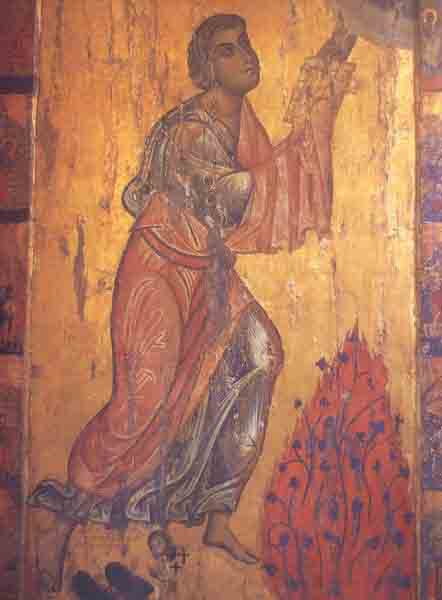Image Details

David Harris/St. Catherine’s Monastery
Unlike his hands, Moses’ feet are bare. His sandals lie beside the burning bush. This is the artist’s allusion to an earlier episode in the Book of Exodus. Moses, while tending his flocks on Mt. Horeb (another name for Mt. Sinai), sees a bush that is on fire but is not consumed. Approaching the bush, Moses hears the voice of God calling out, “Do not come near here; remove your sandals from your feet, for the place on which you are standing is holy ground” (Exodus 3:5).
Byzantine monks located the burning bush in a fertile valley at the foot of Jebel Musa. In the fourth century, St. Helena, the mother of Emperor Constantine, erected a chapel on the site, and later, in the sixth century, Emperor Justinian built a church that incorporated the chapel, as well as a monastery, and a protective wall around these structures. Today, within this enclosure, called St. Catherine’s Monastery, grows a raspberry plant identified as the legendary bush that was not consumed. St. Catherine’s houses an extraordinary sixth-century mosaic of the transfiguration as well as a world-famous collection of Byzantine icons; its manuscript library is second in importance only to that of the Vatican.
